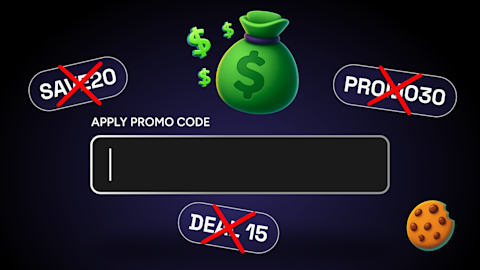The rise of connected fitness has transformed home workouts. As more people invest in home fitness solutions, two brands have emerged as leading contenders: Peloton and Echelon. But with a significant price difference and varying features, choosing between them isn't always straightforward.
Why connected bikes are dominating home fitness
The home fitness landscape has evolved dramatically, with the market now exceeding $18.12 billion in 2024, according to GlobalNewsWire. This surge isn't just about convenience — it reflects a fundamental shift in how people approach fitness. Connected bikes, in particular, have captured attention by offering:
Studio-quality workouts from home
Data-driven performance tracking
Engaging virtual communities
Flexible scheduling for busy lifestyles
While Peloton maintains its premium position with 6.3 million members and high-end hardware, reporting The Business Model Analysts, Echelon has gained ground by offering similar features at more accessible price points. This comprehensive comparison will help you decide which platform better suits your fitness goals and budget.
What you'll learn in this guide
This guide examine critical matters for your buying decision, such as:
Detailed hardware comparisons of each brand's bike lineup
True cost analysis including subscriptions and accessories
Class content quality and variety
Performance tracking capabilities
User experience and community features
Recommendations based on different user needs
Whether you're comparing Peloton's premium offerings to Echelon's more budget-friendly approach, or simply exploring connected fitness options, this guide will help you make an informed choice for your home gym and help to get the best exercise bike for the best deal.
Current exercise bike lineups and hardware comparison
When comparing Peloton and Echelon bikes, build quality and features vary significantly across price points. Let's break down each brand's offerings to help you understand what you get at different price levels. Prices may vary.
Peloton's premium lineup
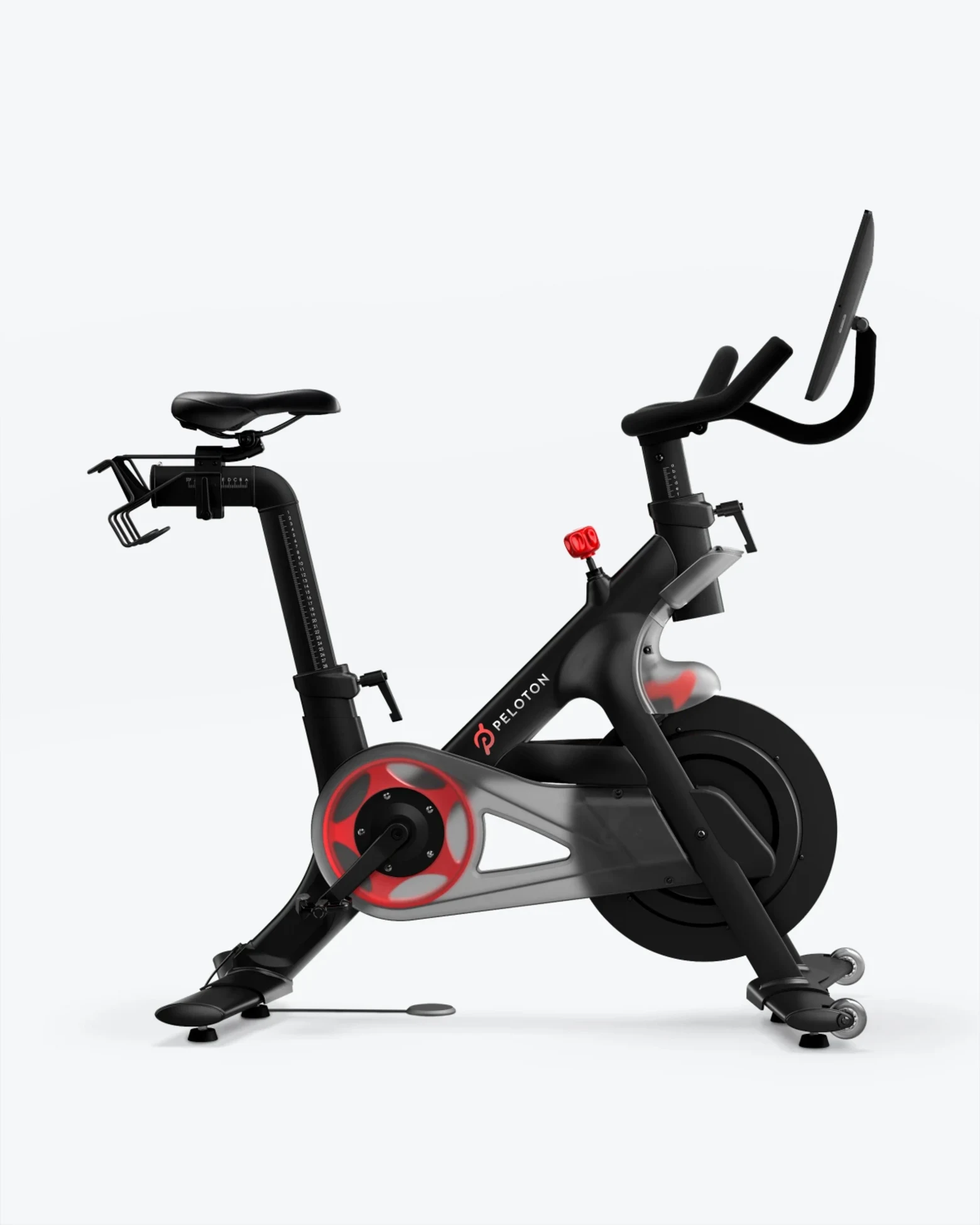 Courtesy of Peloton
Courtesy of Peloton Peloton offers two models focusing on premium quality and integrated technology:
Peloton Bike (Original): around $1,395-$1,445
Peloton Bike+: approx. $2,495
The Bike+ justifies its higher price tag with premium features like auto-resistance adjustment, a rotating HD touchscreen, and Apple GymKit integration. If you’re thinking about getting a Peloton but fear these prices are too high, use a Peloton promo code so save on any Peloton exercise bike.
Echelon's diverse range
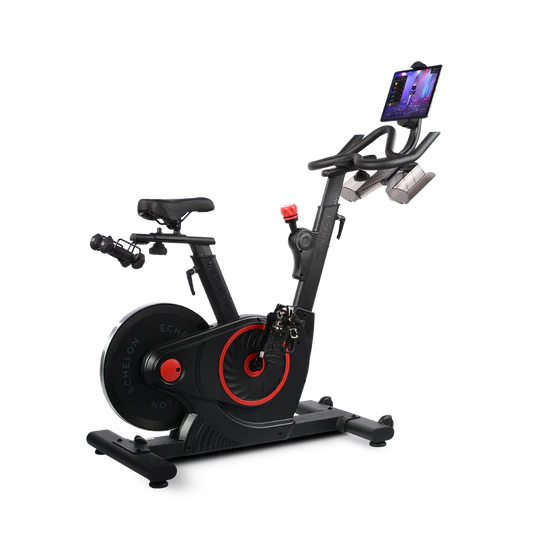 Courtesy of Echelon
Courtesy of EchelonEchelon provides more options at various price points:
GT+ (Entry level): around $900 but has been reported on sale for as low as $399
Connect EX-5: around $900-$1,199
Connect EX-5s-22: around $1,299-$1,599
EX-8s Connect (Premium): around $2,799 at full price but has been seen on sale for as low as $2,199
This variety of options makes Echelon more accessible to different budgets, though features vary significantly between models.
Want to save on that next Echelon exercise bike? Check for Echelon discount codes here.
Echelon vs. Peloton: Key specifications comparison
Here's how the flagship models stack up:
Feature | Peloton Bike+ | Echelon EX-5 |
Dimensions | 61"L x 22"W x 58"H | 58"L x 20"W x 55"H |
Weight | 205 lbs | 106 lbs |
Max User Weight | 297 lbs | 300 lbs |
Display | 23.8" HD touchscreen | Device holder |
Resistance | Magnetic (auto) | 32 levels (manual) |
Key Feature | Auto-Follow resistance | Hybrid pedal design |
If you're new to connected fitness bikes, these specifications might seem like technical jargon. The dimensions tell you how much space you'll need (add about 2 feet on each side for comfortable access). The bike's weight affects stability during workouts — Peloton's heavier build provides a more planted feel, while Echelon's lighter design makes it easier to move. Both support similar maximum user weights, making them suitable for most riders.
The biggest differences lie in the display (Peloton's built-in screen versus Echelon's bring-your-own-device approach) and resistance systems (Peloton's automatic adjustments versus Echelon's manual control).
Echelon vs. Peloton: Who is better for build quality and durability?
Peloton's premium construction shines through in every aspect of their bikes. Built around a commercial-grade steel frame, these machines are engineered to handle intense workouts with minimal vibration or movement.
The 38-pound precision-engineered flywheel provides smooth pedaling action, while the four-speaker sound system and anti-reflective screen coating create an immersive workout experience. This attention to detail extends to the bike's overall stability, which remains rock-solid even during high-resistance, out-of-saddle efforts.
Echelon takes a more practical approach to construction while maintaining good build quality. Their sturdy steel frame provides a stable riding platform, though in a more compact, space-saving design that's ideal for smaller spaces.
The resistance system delivers reliable performance, and thoughtful touches like durable transport wheels and standard toe cage pedals make the bike both practical and accessible. While you might miss some of Peloton's premium flourishes, Echelon's construction quality meets the needs of most home riders.
Recent hardware innovations for Echelon and Peloton
Both brands have introduced new features in 2024:
Peloton Updates:
Enhanced audio system
Improved screen coating
Upgraded processing power
Better camera system
Echelon Updates:
Automatic resistance on premium models
Enhanced Bluetooth connectivity
Improved app integration
Updated pedal system
Understanding the true cost of ownership for Echelon and Peloton exercise bikes
The decision between Peloton and Echelon involves more than just comparing bike prices. Let's explore the complete investment you'll make over time, from initial purchase through ongoing costs.
Initial equipment costs for Echelon and Peloton
Peloton's current lineup focuses on two primary models: the original Bike at non-sale price of $1,445 and the premium Bike+ at around $2,495. They've also introduced refurbished options starting at $995, making the brand more accessible to budget-conscious buyers.
Echelon takes a different approach, offering a broader range of price points. Their lineup starts with the GT+ at around $900 and extends to the premium EX-8s at around $2,300, with several models in between to suit different needs and budgets. Prices may vary.
Echelon vs. Peloton: Essential accessories and setup costs
Both brands require additional accessories to get started. Peloton's essential package includes cycling shoes (around $125), a bike mat (around $75), and a heart rate monitor (around $34). Echelon's accessories come in at slightly lower prices, with cycling shoes at around $79.99 and a heart rate monitor at around $79.99, plus they include a water bottle that Peloton charges separately for. You may be able to buy some of these items on your own for lower prices.
Echelon vs. Peloton: Monthly subscriptions and content access
The subscription cost plays a crucial role in the long-term investment. Peloton's All-Access Membership runs around $44 monthly, providing access to their full library of classes, live sessions, leaderboard features, and multiple user profiles. Echelon's Premier Membership comes in slightly lower at around $34.99 monthly, offering similar features plus their FitPass program for off-bike workouts.
Flexible financing options for Echelon and Peloton
Both companies understand the need for payment flexibility. Peloton currently offers 0% APR financing with terms ranging from 12 to 43 months through Affirm or Citizens Pay. Echelon matches these terms and goes a step further by offering a lease-to-own program for those who might not qualify for traditional financing.
Echelon vs. Peloton: Three-year ownership cost comparison
To understand the true long-term investment, let's look at how costs accumulate over three years, keeping in mind if you were to purchase the recommended equipment, accessories, and subscriptions:
Cost Category | Peloton Original Bike | Echelon EX-5 |
Equipment & Accessories | around $1,679 | around $1,160 |
Subscription (36 months) | around $1,584 | around $1,259 |
Total 3-Year Cost | around $3,263 | around $2,419 |
Prices may vary.
Value beyond the price tag
While Peloton commands a premium price, it delivers exceptional value through higher production quality content, a more polished app experience, and robust community features. The platform also typically offers better resale value when it's time to upgrade.
Echelon, meanwhile, focuses on delivering comparable core functionality and solid build quality at a more accessible price point. Their flexible pricing options and variety of models make it easier for users to find a bike that fits their specific budget and needs.
If you’re wondering how much your exercise bike is really costing you, read here to see how much you’ll actually be paying for an exercise bike over the years.
Echelon vs. Peloton: Class content and workout experience
The quality and variety of classes can make or break your connected fitness experience. Let's explore how Peloton and Echelon's content libraries stack up in 2024.
Class variety and programming for Echelon and Peloton
Peloton's extensive library spans far beyond just cycling. Their platform offers cycling, running, yoga, strength, meditation, stretching, and bootcamp classes. In 2024, they've expanded with new Metrics classes across multiple modalities, adding structure and measurable goals to workouts.
Echelon takes a focused approach to cycling workouts, offering specialized categories including Power Rides, Hill Rides, Fusion Rides, Tabata, and Endurance training. They've notably added Zumba Party Rides and expanded their scenic rides collection to provide more variety.
Echelon vs. Peloton: Content delivery and production quality
Both platforms approach content creation differently:
Peloton's Premium Production:
Structured daily live schedule
Three daily content drops (12pm, 4pm, and 8pm ET)
High-quality music integration
Advanced audio through Super Hi-Fi technology
Echelon's Steady Stream:
Over 200 new weekly classes
Regular live and encore programming
Recently upgraded streaming stability
Entertainment integration via FitOS platform
Community engagement and social features for Echelon and Peloton
Peloton launched Teams in 2024, a significant community upgrade that's already spawned over 20,000 groups. The feature enables private challenges and group goals, fostering stronger connections between members.
Echelon counters with their own community initiatives, including the "Race Around The World" challenge, where teams of 12 members work together toward collective goals. Their weekly instructor "Challenge Captains" help maintain engagement and motivation.
Instructor expertise and teaching styles
The instructor experience differs notably between platforms. Peloton emphasizes instructor personality and brand building, creating celebrity-like followings for their coaches. Each instructor brings their unique style and energy to classes, from high-intensity motivators to technical form experts.
Echelon's instructors focus on fundamentals, with clear technique guidance and progressive difficulty levels. While perhaps less flashy than Peloton's approach, many users appreciate their straightforward, education-focused style.
Music and entertainment integration for Echelon and Peloton
Peloton's music integration stands out with major artist partnerships and carefully curated playlists. Their Super Hi-Fi technology ensures seamless audio transitions and professional-quality sound throughout workouts, with Super Hi-Fi claiming their collaboration with Peloton is the “first and only fitness service to leverage AI for intelligent audio experiences.”
Echelon offers good music variety but takes a broader approach to entertainment. Their FitOS platform includes various entertainment options beyond just music, though the integration isn't quite as polished as Peloton's focused music experience.
Echelon vs. Peloton: Overall content assessment
While both platforms offer engaging workouts, Peloton maintains an edge in production quality and content polish. However, Echelon's growing library and community features make it a strong contender, especially for those prioritizing value over premium production.
Echelon vs. Peloton: Performance metrics and tracking capabilities
Understanding how each platform tracks and displays your performance can help you make the most of your workouts. Let's examine how Peloton and Echelon approach performance monitoring in 2024.
Core performance tracking for Echelon and Peloton
Peloton's sophisticated tracking system centers on their proprietary output calculation, which combines resistance and cadence to measure your power output. Their formula accounts for various factors to provide accurate performance measurements during every ride.
Key metrics displayed during Peloton workouts include:
Real-time power output in watts
Current speed and distance
Resistance level and cadence
Strive Score (heart rate-based effort metric)
Echelon takes a streamlined approach with their 32-level resistance system. Their platform focuses on essential metrics while maintaining accuracy:
RPM-based cadence tracking
Resistance level monitoring
Calorie burn calculations
Distance and speed tracking
Smart device integration for Echelon and Peloton:
Both platforms offer connectivity with popular fitness devices, though their implementations differ significantly.
Peloton leads in Apple integration, offering:
Seamless Apple Watch syncing
GymKit compatibility on Bike+
Automatic workout detection
Real-time heart rate monitoring
Push notifications for workouts
Echelon provides its own smart features through their dedicated app:
Apple Watch compatibility
Multi-device support
Activity minute tracking
Heart rate monitoring
Distance tracking for cardio workouts
Echelon vs. Peloton: Progress tracking and analytics
Peloton's 2024 Teams feature has transformed how users track progress and engage with others. The platform now supports:
Feature | Capability |
Group Challenges | Up to 100 members |
Challenge Duration | Up to 30 days |
Tracking Options | Days, time, workouts, distance |
Progress Metrics | Personal bests, achievements |
Echelon's analytics focus on individual achievement while maintaining community elements:
Detailed post-workout reports
Email summaries of sessions
In-app progress tracking
Community challenges
Performance benchmarking
Display and user experience for Echelon and Peloton
Both platforms present metrics differently during workouts. Peloton's 21.5" HD touchscreen offers an immersive experience with real-time performance overlays and leaderboard integration. Their interface prioritizes clarity and motivation, making it easy to track performance while staying engaged in classes.
Echelon's interface, while functional, takes a more straightforward approach. Users can access all essential metrics during workouts, though the navigation and display organization receive mixed reviews for intuitiveness.
Finding your perfect fit: Who should choose each brand between Echelon and Peloton:
Making the right choice between Peloton and Echelon often comes down to your personal preferences, lifestyle, and fitness goals. Let's explore which platform might be your ideal match.
The ideal Peloton rider
Peloton attracts users who prioritize premium experiences and are willing to invest in top-tier equipment. You might be perfect for Peloton if you're:
A tech enthusiast who loves:
Detailed performance metrics
Seamless Apple Watch integration
Auto-Follow resistance features
Advanced data tracking
A community-driven athlete seeking:
Competitive leaderboard rankings
Team challenges and virtual high-fives
Live class interaction
Strong instructor connections
According to user satisfaction data, 89% of Peloton owners would recommend the platform to friends, with particularly high praise for instructor quality and community features.
The ideal Echelon rider
Echelon appeals to practical fitness enthusiasts who want quality without the premium price tag. You'll likely prefer Echelon if you're:
A value-focused shopper who appreciates:
Similar functionality at lower cost
Flexible device compatibility
Cost-effective long-term ownership
A versatile user looking for:
Dual-sided pedals (both cycling shoes and sneakers)
Height accommodation from 4'5" to 6'8"
Customizable workout setups
Integration with third-party apps
Expert recommendations for Echelon versus Peloton
Here's a quick decision guide to help you choose between Peloton versus Echelon:
Choose Peloton if you:
Have dedicated workout space
Value production quality
Share with family (up to 20 profiles)
Prefer refined user experience
Want top-tier instruction
 Courtesy of Peloton
Courtesy of PelotonChoose Echelon if you:
Have a tighter budget
Need flexible setup options
Already own a tablet
Want versatile pedal options
Prefer customizable workouts
 Courtesy of Echelon
Courtesy of EchelonEchelon vs. Peloton: Making your decision
Consider these key factors when choosing:
Factor | Choose Peloton | Choose Echelon |
Budget | Premium (around $1,445+) | Value (around $900+) |
Space | Dedicated area | Flexible setup |
Experience | Boutique fitness | Practical training |
Tech needs | All-in-one solution | BYOD (bring your own device such as an iPad or tablet) friendly |
Community | Highly engaged | Growing network |
Top alternatives to Echelon and Peloton to consider
While Peloton and Echelon dominate the connected fitness conversation, several compelling alternatives deserve consideration. Let's explore the top competitors that might better suit your specific needs.
NordicTrack S22i Studio Cycle: The feature-rich challenger
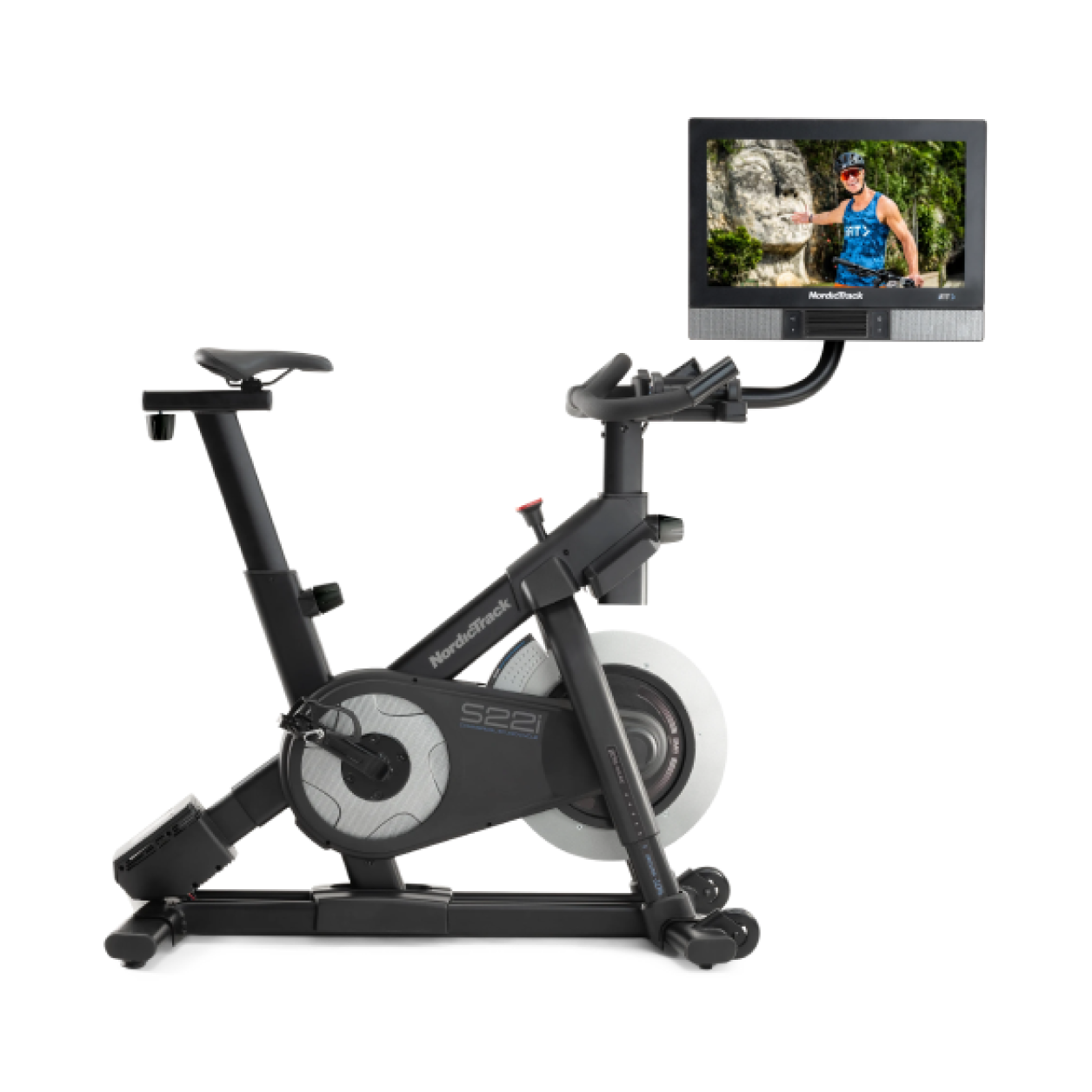 Courtesy of NordicTrack
Courtesy of NordicTrackNordicTrack's S22i Studio Cycle flagship bike stands out with unique capabilities that neither Peloton nor Echelon offer:
Price: around $1,699-$1,899
20% incline/-10% decline capability
Rotating 22" HD touchscreen
iFIT membership ($39/month)
Heavier, more stable frame (200 lbs)
Superior warranty coverage
The S22i particularly appeals to riders who want to simulate outdoor training conditions. Its automatic resistance adjustment and global routes provide an immersive experience that outdoor enthusiasts appreciate.
Bowflex VeloCore: The innovation leader
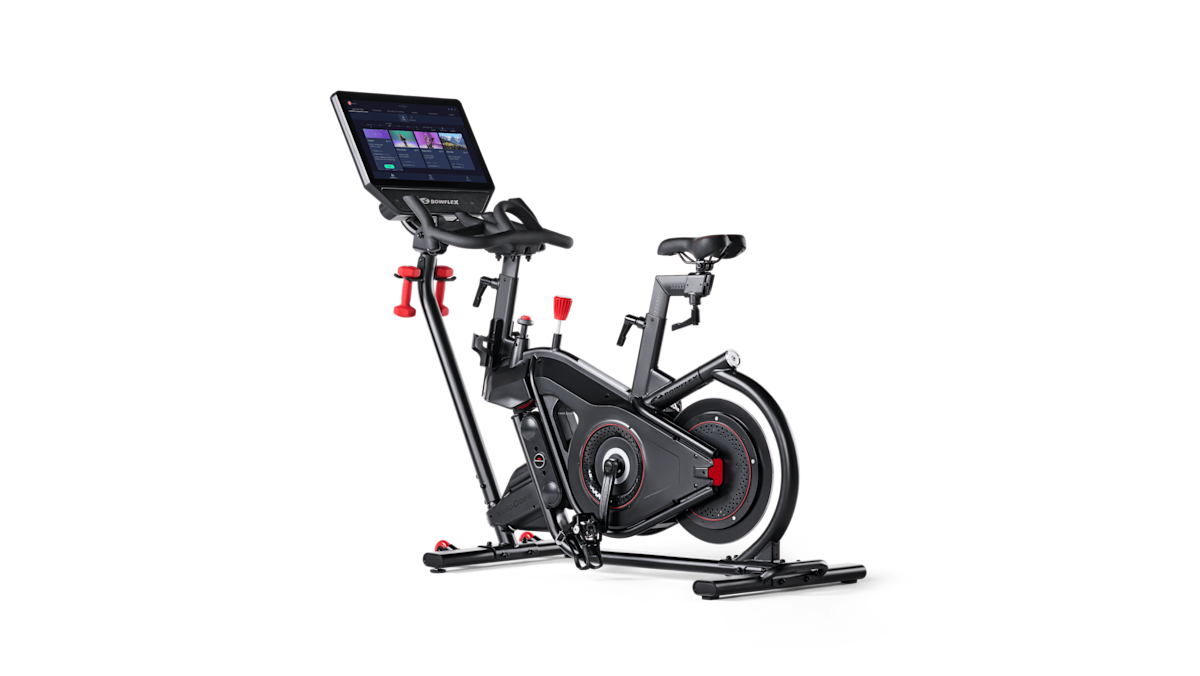 Courtesy of BowFlex
Courtesy of BowFlexBowflex’s VeloCore takes a unique approach with their VeloCore bike:
Price: around $1,799 but has been reported on sale for as low as $999
Signature leaning mode for core engagement
Multiple handlebar positions
JRNY membership (lower cost than competitors)
Streaming app compatibility
Sporty frame design
The VeloCore's leaning capability adds a new dimension to indoor cycling, engaging core muscles in a way that traditional stationary bikes can't match.
Click here to check out Bowflex discount codes
SoulCycle At-Home: The boutique experience
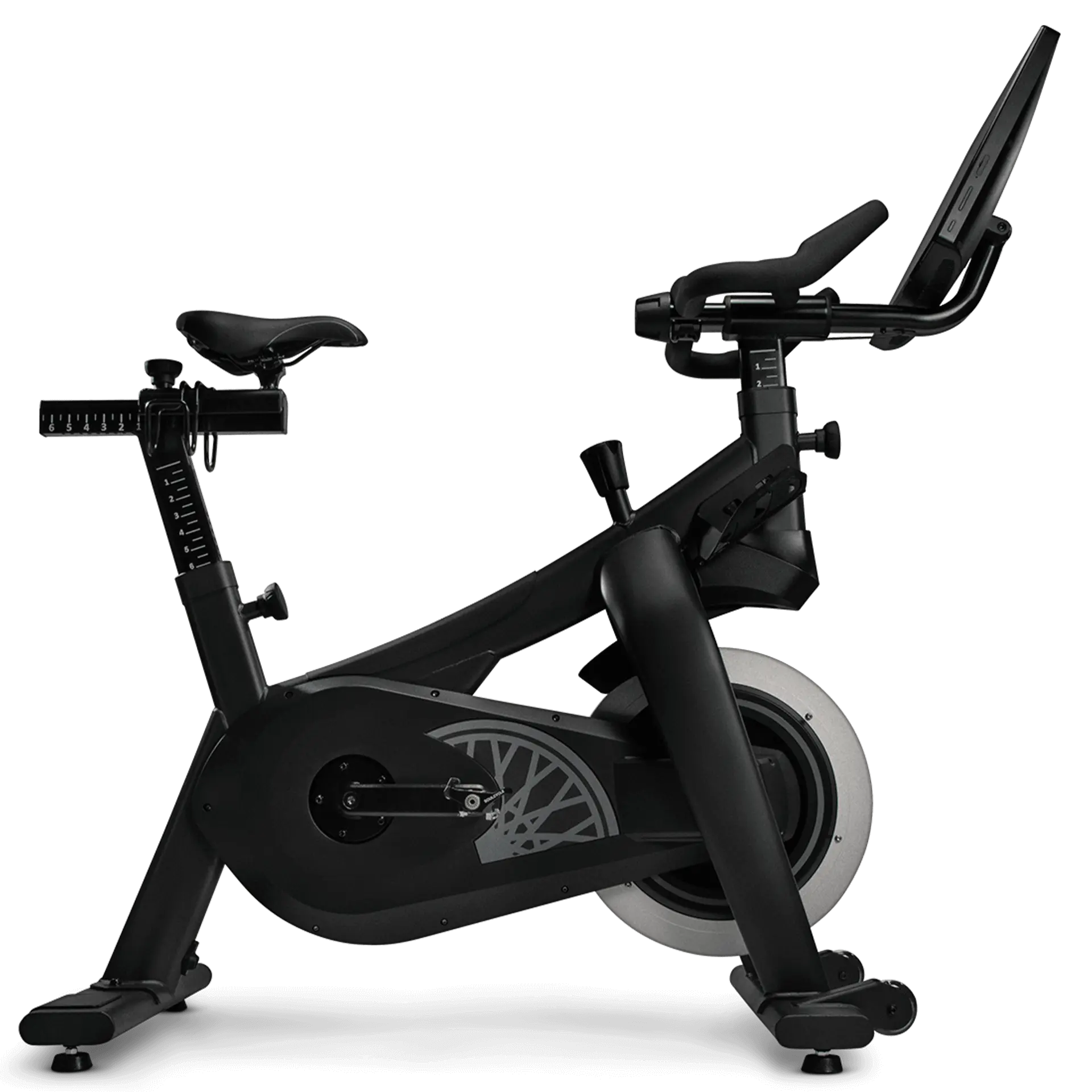 Courtesy of Equinox and SoulCycle
Courtesy of Equinox and SoulCycle SoulCycle’s At-Home bike brings their iconic studio experience home:
Price: around $1,500-$2,500 depending on sales
Choreography-focused classes
Beat-based workouts
21.5" touchscreen
Higher weight capacity (350 lbs)
Larger footprint for stability
Perfect for riders who prefer dance-style workouts and rhythm-based training over traditional cycling metrics.
Looking for more alternatives to Peloton? Read the full guide here on the top 5 best choices for an exercise bike that are not Peloton.
Value analysis
Depending on your priorities, each alternative offers specific advantages:
Best Budget Option: The Bowflex C6 provides multi-app compatibility without a built-in screen, offering flexibility at a lower price point.
Premium Experience:
SoulCycle excels in choreography-focused workouts
NordicTrack leads in outdoor training simulation
Most Versatile:
Bowflex VeloCore combines unique features with app flexibility
NordicTrack S22i offers the most comprehensive feature set
Expert assessment
According to expert reviews, the NordicTrack S22i emerges as the strongest overall alternative to Peloton and Echelon, particularly for those seeking premium features and outdoor training simulation. The Bowflex VeloCore appeals to innovation-focused users, while SoulCycle caters to those preferring choreography-based workouts.
Making your final choice
After thoroughly comparing Peloton and Echelon, along with their alternatives, the best choice comes down to your specific needs, budget, and fitness goals. Here's what our research clearly shows:
Choose Peloton if you value premium experiences and aren't price-sensitive. Its polished content, sophisticated metrics, and engaged community justify the higher cost for many users. The platform particularly shines for tech-savvy fitness enthusiasts who appreciate detailed performance tracking and seamless integration with other devices.
Opt for Echelon if you want similar core functionality at a lower price point. While you might sacrifice some premium features, you'll still get effective workouts and a growing community. Echelon makes particular sense for practical buyers who already own tablets or prefer more flexible setup options.
Consider alternatives like NordicTrack or Bowflex if you want specific features missing from both platforms. NordicTrack's incline capability and Bowflex's leaning mode offer unique training experiences that might better match your fitness goals.
Whatever you choose, remember that the best connected bike is the one you'll actually use consistently. Focus on matching the platform's strengths to your personal preferences and circumstances rather than just comparing feature lists or prices to always be getting the best deal on your exercise bike.
More articles

by Sean Fisher
AI Content Strategist · Demand.io
Sean Fisher is an AI Content Strategist at Demand.io, where he leads content initiatives and develops an overarching AI content strategy. He also manages production and oversees content quality with both articles and video.
Prior to joining Demand.io in September 2024, Sean served as a Junior Editor at GOBankingRates, where he pioneered the company's AI content program. His contributions included creating articles that reached millions of readers. Before that, he was a Copy Editor/Proofreader at WebMD, where he edited digital advertisements and medical articles. His work at WebMD provided him with a foundation in a detail-oriented, regulated field.
Sean holds a Bachelor's degree in Film and Media Studies with a minor in English from the University of California, Santa Barbara, and an Associate's degree in English from Orange Coast College.


